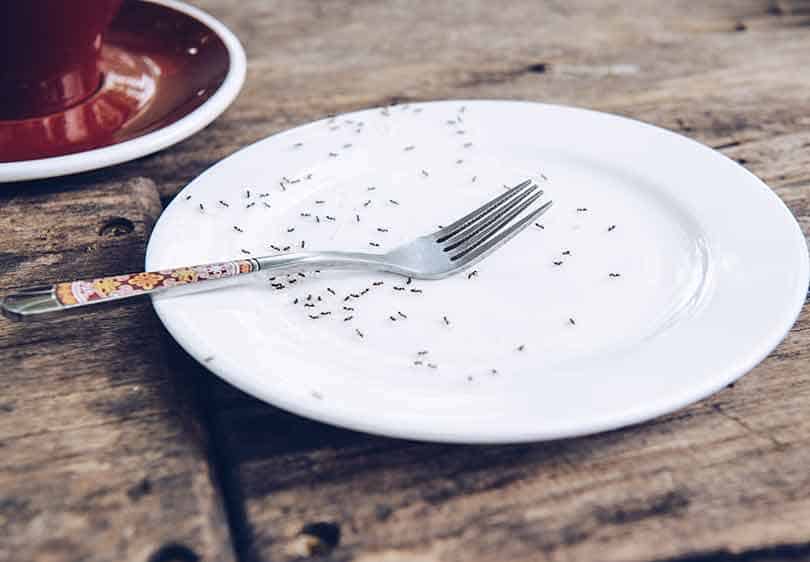The smart Trick of Guardian Pest Control That Nobody is Discussing
The smart Trick of Guardian Pest Control That Nobody is Discussing
Blog Article
A Biased View of Guardian Pest Control
Table of ContentsThe Facts About Guardian Pest Control RevealedSome Known Factual Statements About Guardian Pest Control Guardian Pest Control for BeginnersThe 3-Minute Rule for Guardian Pest ControlExcitement About Guardian Pest ControlSome Known Factual Statements About Guardian Pest Control
A targeted strategy such as this keeps environmental influence low. Searching and keeping an eye on for insects ought to be done regularly, anywhere from everyday to weekly depending upon the kind of bug and the atmosphere. Produce a route, and note the position on the course to stop and check under leaves, along a foundation, at lure stations.Looking around a client's backyard for areas mosquitoes could lay eggs. Threshold-based decision-making associates with scouting and checking. Discovering a few wasps every now and then possibly does not warrant action. But seeing them each day and in increasing numbers suggests it's time to find and eliminate their nest.
You could use a trap plant such as zinnia to bring in Japanese beetles. Staying updated on insect control approaches provides you a side over your competitors.
The Single Strategy To Use For Guardian Pest Control
Avoiding pest infestations is easier than eliminating them, so inform consumers when securing a fracture or caulking a window would certainly make a distinction. Determine the insect and tailor the control method (best pest control in orem ut) - https://profile.hatena.ne.jp/or3mp3stctrl/. Know specifically what sort of bug you're managing, and research the atmosphere very carefully as you generate a therapy plan
There are a number of general methods to insect pest monitoring. When developing an overall pest management method it is valuable to think about every one of the readily available alternatives. A lot of particular insect control approaches can be identified into the following significant classifications: cultural control, host resistance, physical control, mechanical control, organic control, and chemical control.
These approaches involve adjustment of conventional farming or gardening techniques to prevent pests or to make the setting less favorable for them. There are numerous kinds of social controls; the complying with are a few instances of typically made use of techniques. A western corn rootworm, an insect that can be managed by crop turning.
Unknown Facts About Guardian Pest Control
replaces a plant that is susceptible to a major bug with an additional plant that is not vulnerable, on a turning basis. As an example, corn rootworm larvae can be starved out by adhering to corn with one to 2 years of a non-host plant such as soybeans, alfalfa, oats, or various other crops.

A very carefully thought about time of planting will certainly assist avoid some bug issues such as seed corn maggot. Some apple selections are immune to one or more bugs.
Guardian Pest Control Fundamentals Explained
Plant breeders attempt to make use of these qualities and also improve them to establish plants that are resistant. Lots of selections of essential plants expanded today, such as wheat, rice, alfalfa, corn, and apples are resistant to one or even more parasites. Historically, the development of resistant selections was frequently tiresome and extensive, needing several generations of plant hybridization.
Drifting row covers maintain pests out more info here These are methods that physically keep insect pests from reaching their hosts - https://experiment.com/users/or3mp3stctrl. Obstacles include home window screens for keeping wellness and nuisance bugs out of structures and plant insects out of greenhouses, drifting row covers for several horticultural plants, and plant collars to maintain cutworms from attacking plants such as tomatoes
Codling moth larvae can be caught under cardboard bands twisted around apple trees; the bands are removed and destroyed. Some bugs, such as earwigs and slugs, can be tempted to their death in sunken traps filled up with beer. In some instances, chemical lures (including pheromones or various other chemical attractants) are readily available to increase trap efficiency.
The Guardian Pest Control Statements

For instance, plum curculio beetles can be removed from fruit trees by diligently banging tree limbs with a padded stick and accumulating the grown-up weevils on a white sheet as they fall out of the trees. A solid spray of water will certainly dislodge aphids and termites from greenhouse, yard, and house plants.
See This Report about Guardian Pest Control
Growing or tillage subjects several dirt pests to desiccation or predation by birds. This is using advantageous organisms to manage bugs. Several centuries earlier, Chinese farmers observed that ants were aiding to control insect pests in their citrus orchards by feeding on caterpillars, beetles, and leaf-feeding bugs. The farmers found that by gathering the papery nests of a certain kind of ant from trees in the countryside and moving them into their orchards, they improved control of some insects.
Predators may be bugs or other insectivorous pets, each of which takes in numerous insect prey during its life time. Parasites lay their eggs in or on their host.

Report this page